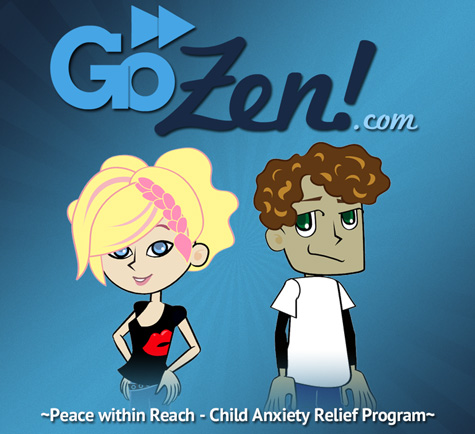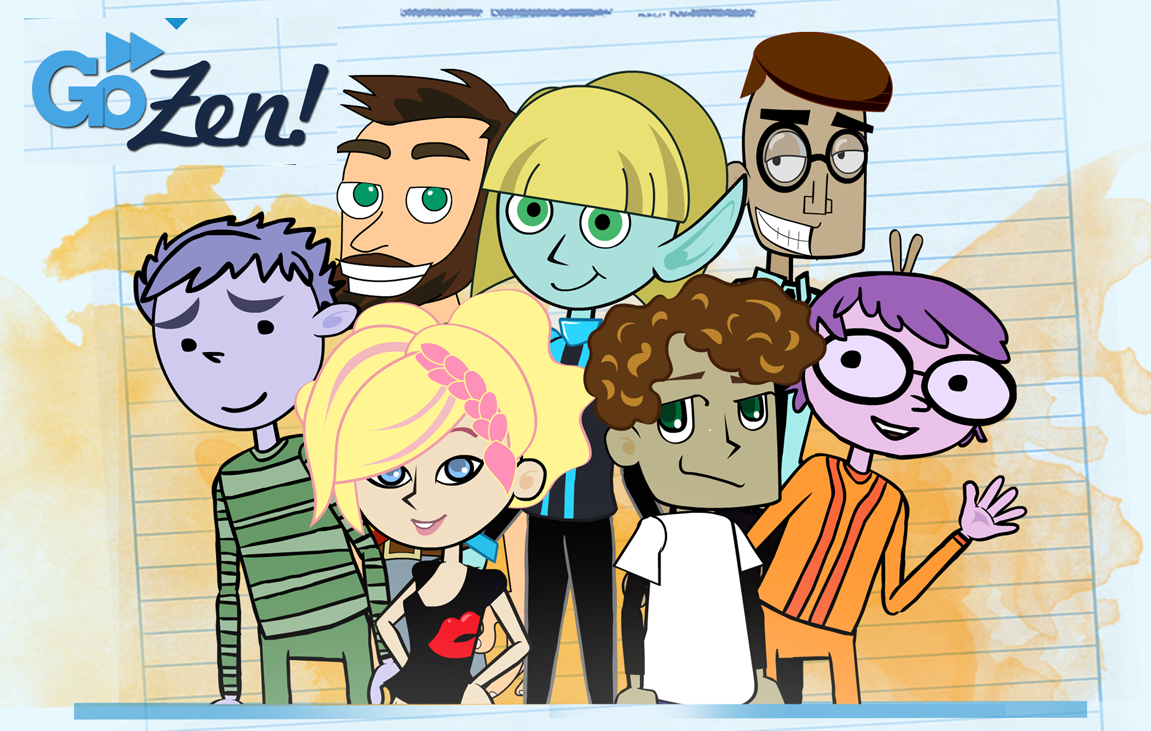Guest Post Written by Renee Jain
If your child is anxious, it’s likely they do something I like to call what-iffing:
- “What if I don’t get asked to the dance?”
- “What if you run out of gas and can’t pick me up from school?”
- “What if we get robbed?”
- “What if… [insert your child’s anxious thought here]?”
What-iffing is the tendency to ponder possible future scenarios and then worry about them excessively in the form of ‘what if’ questions. As a parent, you also worry excessively… about your child’s worrying. You want to ease their pain. You may try to reassure them with words, comfort them with hugs, or even yell at them in frustration. If your child is not assuaged by any of these methods, please know you are not alone. Please also know there are approaches that can help.
Humans are natural-born time travelers.
We travel to the past and future on a regular basis using just our minds. In fact, research shows that 47 percent of the time, we’re actually thinking about something other than what we’re doing. I’m sure you’ve been driving somewhere and have ended up at your destination without knowing exactly how you reached there. You see, we all have an uncanny ability to wander off with our minds, but ruminating on things that have yet to happen can be troubling as studies show that we tend to overestimate the uncertainty of the future.
Don’t get me wrong; thinking about the future has value. It helps us plan and set goals. It unleashes our creativity and imagination. The flipside is that our ability to visualize the future can be so realistic that if we’re worried about something, it can activate our nervous system. So, while we are the only species on Earth thinking critically about the future, we are also the only ones who can throw ourselves into a full nervous system response from a simple thought.
In other words, what-iffing about the future can be perceived by your child as something genuinely threatening and trigger a stress response. Let me say that yet another way: A simple thought can make your child’s mind and body react as if he or she were being attacked by a lion. So, what can you do to help?
Start by the process by connecting with your child. When they start what-iffing, let them you understand they are worried and you’re going to work on it together. Take some deep breaths together. When you’re ready, try one of these four ideas:
1. Create an ICE plan
Before you go on a long road trip, you usually check that you have all your in-case-of-emergency (ICE) supplies. Why? To plan for emergencies, of course! Your child’s what-if questions are potential emergencies in their mind. Next time they are what-iffing, don’t resist their thoughts. Instead, try a writing exercise:
- First, write down the what-if question. Example: What if the car runs out of gas?
- Next, create an ICE plan by filling in the blanks in this sentence: If [insert worried thought], then I/we will [insert contingency plan]. Example: If the car runs out of gas, then we will use our AAA card to call for help.
This is a technique borrowed from goal-setting researchers. Studies on goal setting show that you’re more likely to stay on course toward a goal by if you have a plan to overcome anticipated obstacles before they even happen.
2. Throw the Questions Out (literally)
Have your child write down their worried thought or question on a sheet of paper. Then take the sheet, rip it up and throw it in the garbage. In a recent Ohio State University study, a group of people were asked to write down negative thoughts on slips of paper and then later throw the papers in the trash. Another group was asked to do the same thing except keep the papers with them.
The results? Researchers discovered that throwing out a negative thought literally helps discard the thought mentally.
A co-author of the study, Richard Petty, said, “However you tag your thoughts—as trash or as worthy of protection—seems to make a difference in how you use those thoughts.”
3. Kick Logic Back into Gear
Anxiety mimics the stress response. During a stress response, the emotional brain is put in charge, and the logical brain is put on hold for the purpose of survival. After all, the need to rationalize or think things through was never a top priority when being attacked by a predator. This response is still hardwired into our systems. So, when children activate anxiety responses through what-iffing, they are not in touch with their rational side. Consequently, their risk perception and its influence on decision making go a little haywire.
For example, if your child says, “What if the plane crashes? I don’t want to fly.” You may explain that the plane is safe — it’s even safer than the car you both ride in every day. This logic may have zero influence. Anxiety makes us focus on catastrophic outcomes without much regard for probability. So, what can you do to kick the logical brain back into gear?
 Grab a sheet of paper and write down the what-if question on top. Next, create three columns underneath and title them “Best Case,” “Worst Case,” and “Most Likely Outcome.” Help your child write out ideas about the best case, worst case, and most likely outcomes of the what-if situation. Do this exercise repeatedly, and you’ll begin to reengage your child’s logic.
Grab a sheet of paper and write down the what-if question on top. Next, create three columns underneath and title them “Best Case,” “Worst Case,” and “Most Likely Outcome.” Help your child write out ideas about the best case, worst case, and most likely outcomes of the what-if situation. Do this exercise repeatedly, and you’ll begin to reengage your child’s logic.
4. Go From “What If?” to What Is
Bring your child back from his or her mental road trip by asking some very simple questions.
- Touch: What can you feel under your fingertips right now? Tell me about the texture.
- Smell: What can you smell with your nose? Is it a smell you recognize?
- Sight: What do you see with your eyes? Describe it in detail.
- Sound: What do you hear? Tell me about the faintest noise you hear.
- Taste: What do you taste right now?
This is a mindfulness exercise. Mounting evidence suggests that paying purposeful attention to the present is a fast track to going from fight-or-flight mode to a rest-and-digest state. Mindfulness can further train your nervous system to remain more consistently calm in the face of adversity as you can learn to pause before reacting automatically to thoughts and situations.
To learn more about Renee’s unique anxiety relief programs for kids visit GoZen!
Does your child need anxiety relief? Enter here:
a Rafflecopter giveaway
 Renee Jain is an award-winning tech entrepreneur turned speaker and certified life coach. She specializes in cultivating skills of resilience in both adults and children. Renee’s passion is taking research-based concepts and transforming them into fun and digestible learning modules. For children, she has created one-of-a-kind anxiety relief programs at GoZen! delivered via engaging animated shorts.
Renee Jain is an award-winning tech entrepreneur turned speaker and certified life coach. She specializes in cultivating skills of resilience in both adults and children. Renee’s passion is taking research-based concepts and transforming them into fun and digestible learning modules. For children, she has created one-of-a-kind anxiety relief programs at GoZen! delivered via engaging animated shorts.




